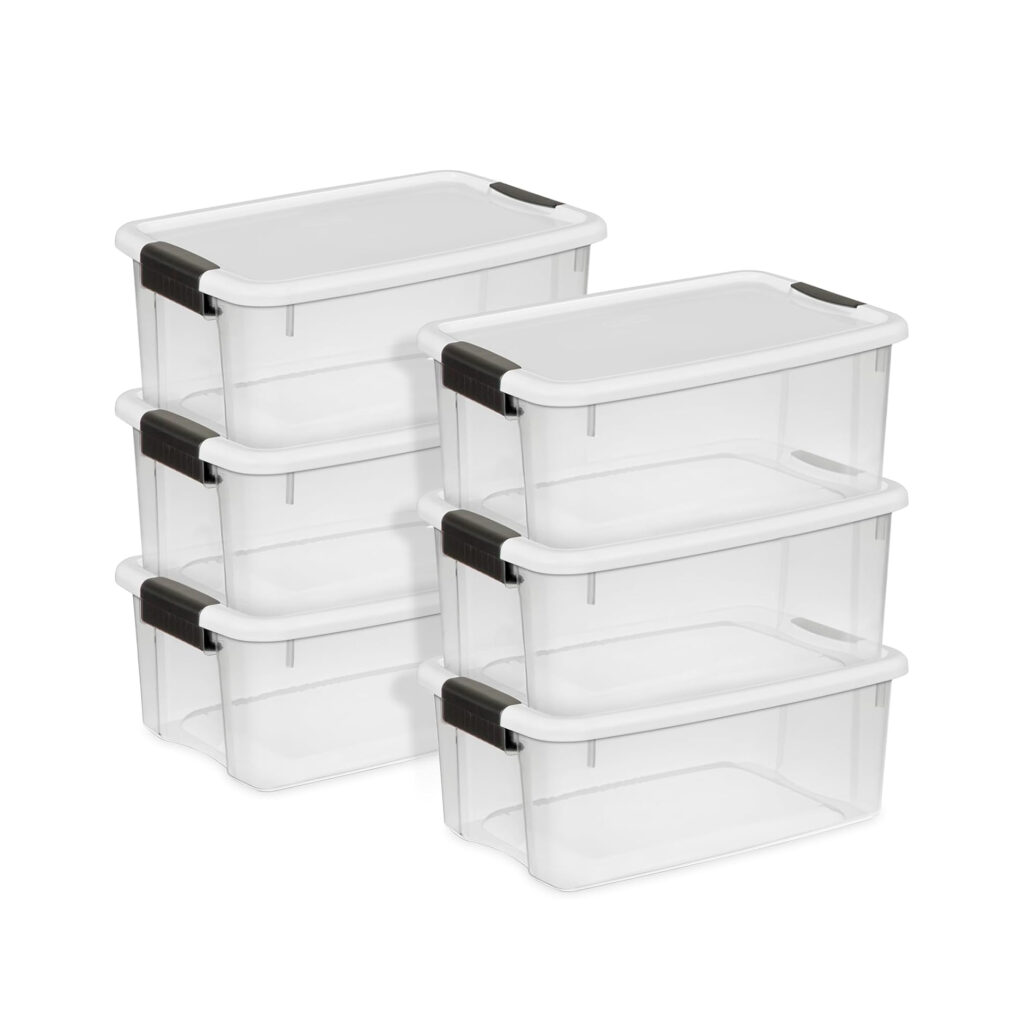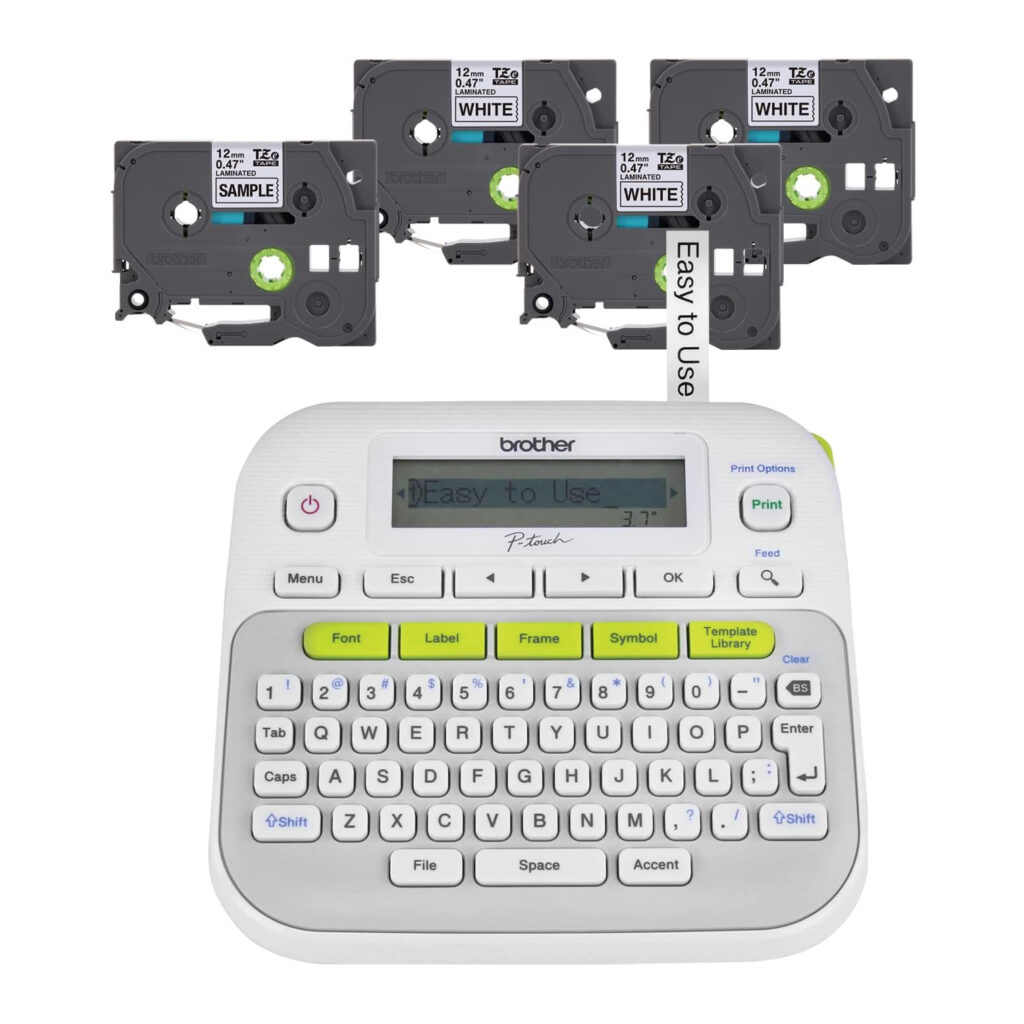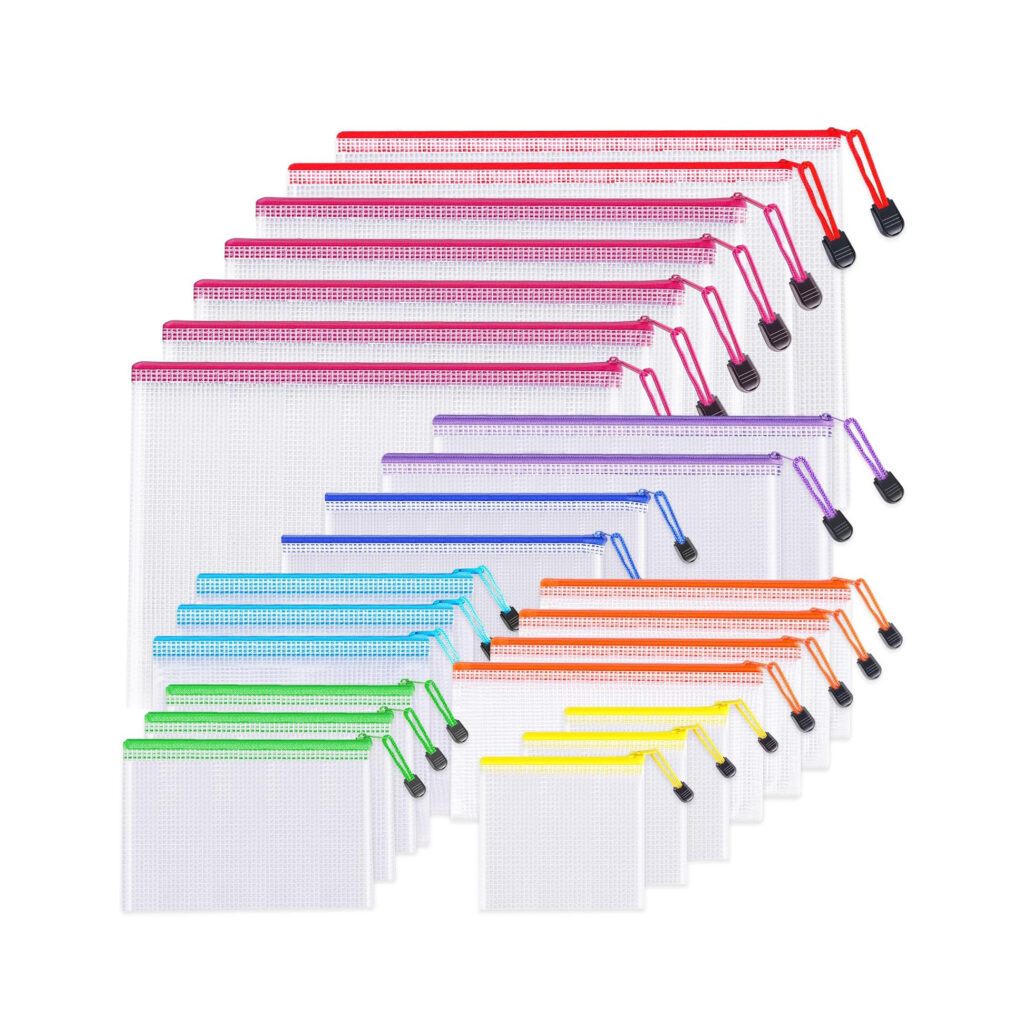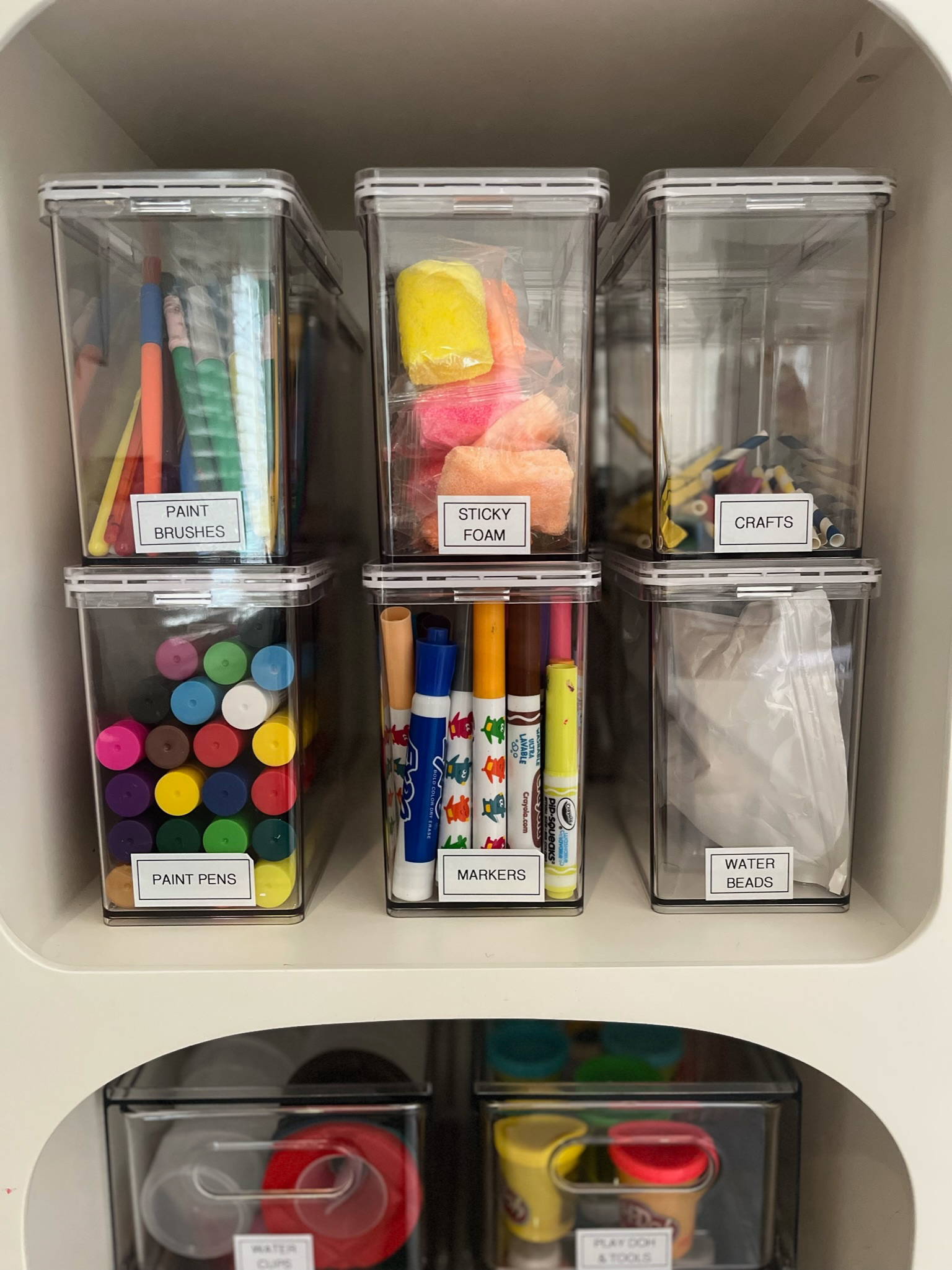There’s a TikTok trend that’s popped up on my For You Page, where parents show their homes before and after baby. Pre-baby, it’s all about curated, immaculate spaces. Post-baby, it’s toys in primary colors everywhere. This all-too-relatable experience got me thinking about how Amanda Titchenal, founder of full-service organizing firm Well Organized and a mom of three, has handled it.
“Sometimes, we want to hide toys so we don’t see them, and other times, we want our kids to see them,” she says. To tackle this undertaking on your own, read on for how Titchenal stores (and eventually, tosses) toys in her own home and for her clients.
Thomas J. Story
Determine your home’s play location(s).
Depending on the size of your home and where you want toys on display or tucked away, there are several routes to take. For parents wanting to carve out a play area in the living room, Titchenal recommends decorative baskets or boxes, especially for larger toy items such as stuffed animals. “It’s a nice touch that also hides away your kids’ toys,” she says.
Then, there are the wildly popular (and smaller and messier) toys like Legos, Barbies, and building blocks. To keep any area tidy, Titchenal suggests getting several clear bins to make the items visible to your kids.

Courtesy of Amazon
Take everything out of the original packaging.
Titchenal says this applies to virtually any toy, and says you can easily use those clear containers and labels to differentiate each item. “Get them out of their packages, because they tend to rip or you can’t fit toys back in correctly,” she adds.
Once the packaging is removed and toys are stored in bins, start labeling—even if your child isn’t able to read it yet. “We still label everything, so as they begin to read, or if anybody else is watching the kids like a babysitter or Grandma and Grandpa, it still keeps a system as well,” Titchenal explains.

Courtesy of Amazon
Macro- or micro-organize, depending on your child’s age.
Just like anything else, Titchenal breaks it down to macro- versus micro-organizing. You’ll want to evaluate your lifestyle and your child’s age, since these factors will affect your organization levels.
Take baby dolls, for instance, which you can separate into smaller micro-categories: clothing, shoes, gear, and so on. Babies and toddlers are just beginning to understand cleanup, so creating a micro-organization system might not be best for your family.
“It’s a matter of what you can maintain,” Titchenal says. “If you know it would take hours to re-sort your kids’ dolls and accessories back in specific categories, then don’t do that. Have a couple bins that you know are all for baby dolls, and go from there. As kids get older and more mature and learn systems, then you can start creating more specific micro-systems for them.”
Organize specific toys appropriately.
Titchenal and her team treat each toy differently, Below is a quick synopsis of how they organize Legos, board games and puzzles, and arts and crafts.
Legos
Titchenal says Legos are among the most challenging for parents to organize—and with good reason. They come in all sorts of sizes, colors, and styles, and each kit introduces even more of a mess. Her solution? Sort each piece by color, or collect all of the Legos into a few designated bins. “You kind of have to go with how your kids play,” she says. “It’s about what’s easy for you and your family, and what’s going to make your life go smoothly and not make you go crazy trying to maintain a system.”

Courtesy of Amazon
Board Games and Puzzles
Similar to toys, these should come out of their original packaging and into zip pouches, which take up less space and make everything look uniform. “And you’re not dealing with ripped or broken boxes,” Titchenal adds, sharing that if kids are more visual you can cut out the picture of the board game or the puzzle and put it on the pouch.

Amanda Titchenal
Arts and Crafts
It’s easy for crayons and markers to get jumbled and mismatched, which is why these should come out of their packaging, too. Titchenal likes using clear containers or pouches, so your child can see them more clearly. You can add these to a space-saving rolling cart that you can bring out whenever your budding artist feels inspired. “We try to create one small zone for arts and crafts where all of that belongs, whether it’s a cart, cabinet in your kitchen, in a linen closet or somewhere nearby that is easy for kids to access that you don’t have to constantly be cleaning up,” she says. “If you have room for one, I also like adding a little art table to a corner of a living or playroom.”

Amanda Titchenal
Activity Books
These often fall in the arts and crafts category, but Titchenal has a special system for things like coloring and sticker books. She uses multipurpose bins, which are similar to magazine organizers or filing boxes.
Rely on cubbies for space-saving.
Some of Titchenal’s favorites are from IKEA’s KALLAX collection, which come in various styles for convenient toy curating. “Cubby systems help create differentiation and separate toys,” she says. “For families with two kids, we’ll get a cubby unit with six cubbies in it, and one child gets three cubbies each.”

Courtesy of IKEA
Know when and how to purge.
Titchenal jokes that parents should get rid of toys every day, but here’s one approachable hack: Have a clean-out just before each holiday. Birthdays and the holiday season bring tons of new gifts, and Titchenal says even Valentine’s Day or Easter can serve as markers to toss any toys your child is no longer using.
“It’s the ideal transition,” she says. “Ask your child, ‘What are you playing with?’ or think to yourself about what they’ve outgrown. Kids change what they’re into often, so if you start noticing some toys aren’t getting touched, then it’s time to look at them and see if you get rid of them.”
It’s only natural to want to hold onto some items, especially if you’re planning on welcoming more kids in the future. That said, Titchenal recommends keeping building blocks and learning toys, and donating the rest to women’s shelters, churches, and other local organizations. Plus, Lego has a recycling program called Replay that allows you to send in your bricks for donation.
If you’re having a difficult time parting with your child’s toys, remember that it could be beneficial for your entire household—and potentially make playtime even more fun.
“In my 20 years of experience, I will say less is so much more for the kids,” she says. “They do not need all that stuff, and they’re so much happier with less.”
We only recommend things we love. If you buy something through our site, we might earn a commission.

